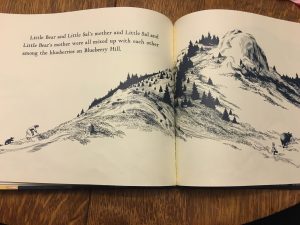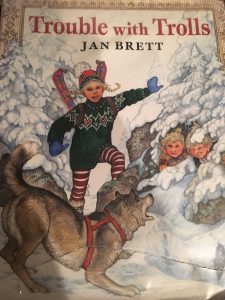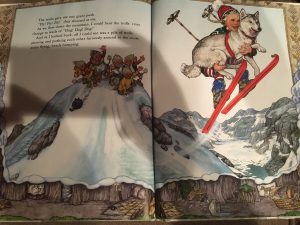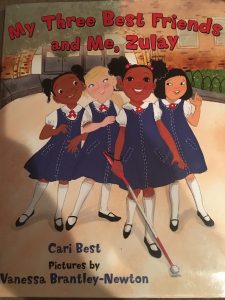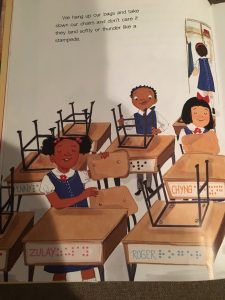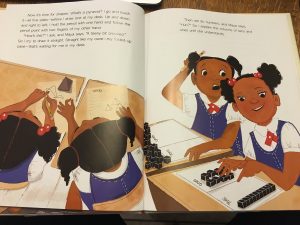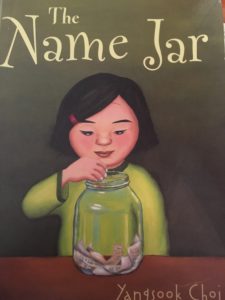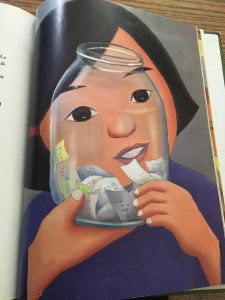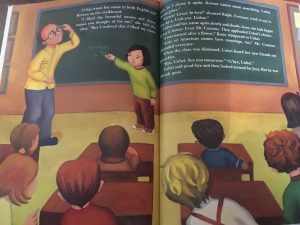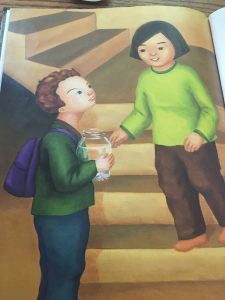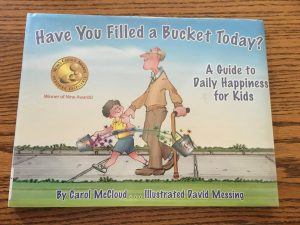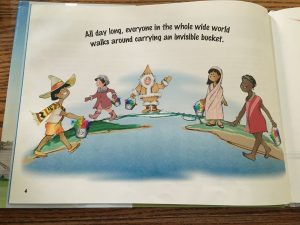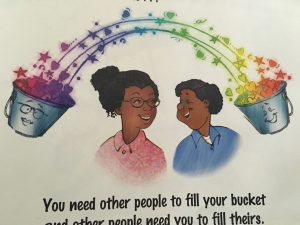Title: Blueberries for Sal
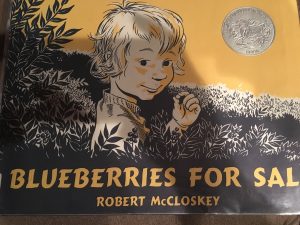
Author: Robert McCloskey
Illustrator: Robert McCloskey
Publisher and Year: The Viking Press, 1948
Number of Pages: 55
Genre: Fiction
Analysis: Blueberries for Sal is about a young girl, Sal, her mother, and a little bear and her mother bear who all go to the Blueberry Hill to get blueberries in order to save for the winter. While Sal and little bear are separated from their mothers, they encounter the other mother, but in the end and reunite with their own mothers and gather enough blueberries to save for winter. This book received a Caldecott Honor.
This book can function as a mirror for children who wander away or are selective listeners to their mothers, but could also function as a mirror for mothers whom children do not listen to instructions. The initial fear that both mother and child feel when getting lost is an emotion thoroughly expressed within this book. Not only does this book function as a mirror but can also function as a window for children nowadays to learn about a different time period, specifically about the role of mother and daughter.
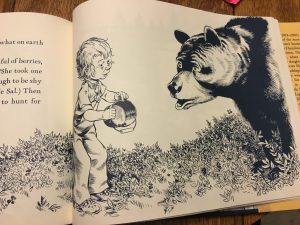
Perceptually, the book appears to be a happy book with the yellow and blue front cover. The text throughout the book is easy to read and written in blue print and a white background. The words are also big enough to read from a distance and in a clean cut print. The length of the sentences and paragraphs is not too long, just enough to tell the story before turning the page. Although the images are detailed, they simply mirror the text, not adding much detail to the story at all.
Structurally, the images are all in blue and white and appear to be pencil drawings, detailed and intricate. Both the human mother and bear mother are larger than their child, demonstrating that the mothers are stronger and the children are weaker. Often times throughout this book, the children are looking toward the right, showing that they are less secure, and the mothers are looking towards the left, which shows that they are more stable and secure. A child’s security can be less than the mother’s because the children get lost throughout the book, feeling insecure without their mothers.
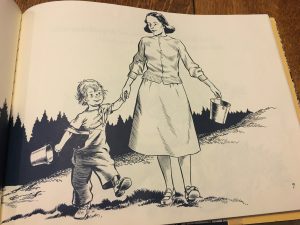
Ideologically, this book portrays stereotypical gender roles. Specifically speaking, the mother wears a skirt and does more feminine jobs, like pick and can blueberries. This book is from an older time period, so for the time period, the idea of collecting blueberries to save for the winter while wearing a skirt is appropriate for the time period. However nowadays the roles portrayed throughout the book are stereotypical. Society should want to move further away from stereotypical roles being reinforced. This book encouraged the audience that stereotypical roles are okay and that the women should be the ones collecting and canning blueberries, not the men or even the entire family. Throughout the book Sal and Little Bear are always wandering and not collecting blueberries. A lesson that children should not learn from this book is that it is not okay to wander away from adults. Also, Sal and the cub were told by their mothers to save blueberries for the winter and both Sal and the cub did not listen to their mothers’ instructions, which again demonstrate a poor message to the readers.
